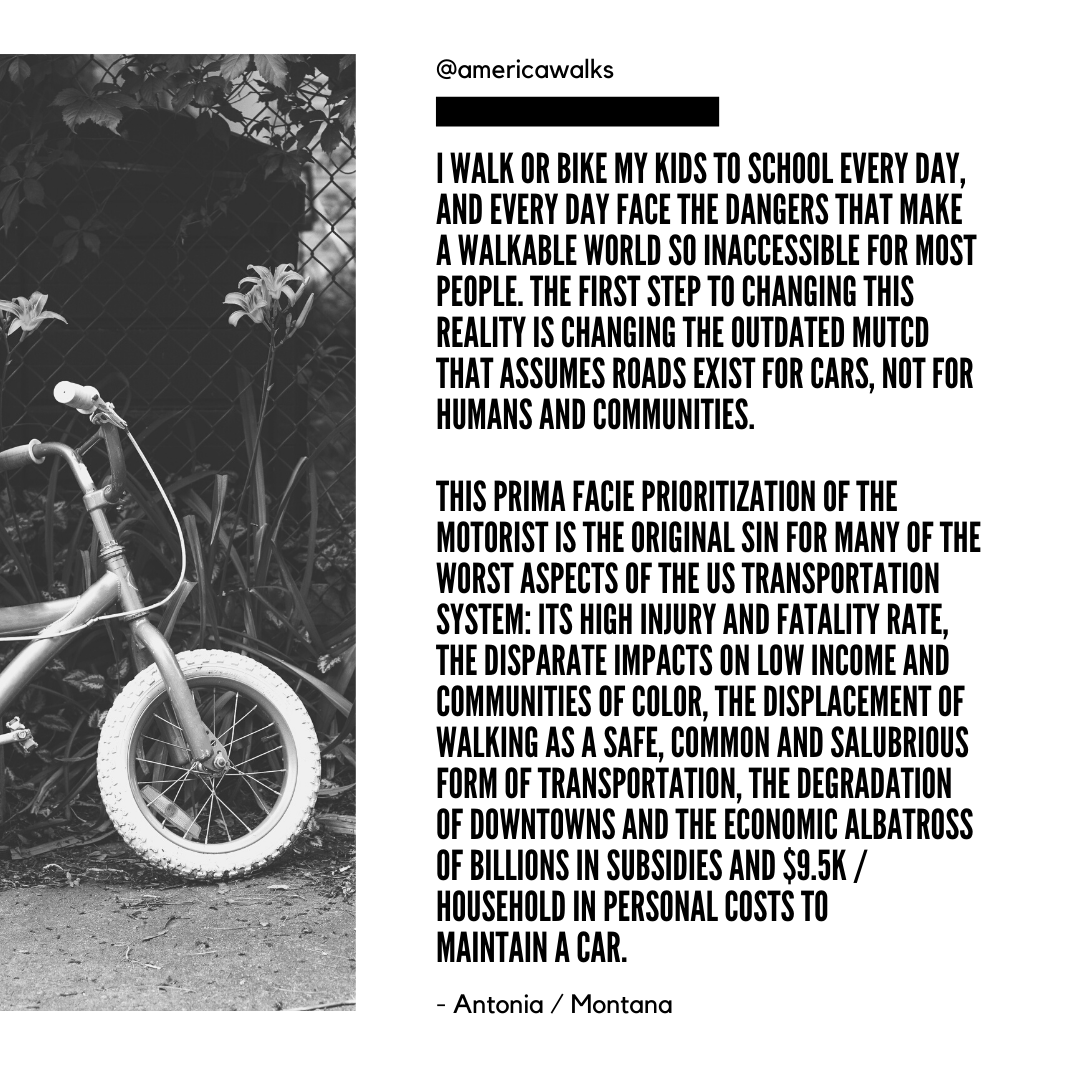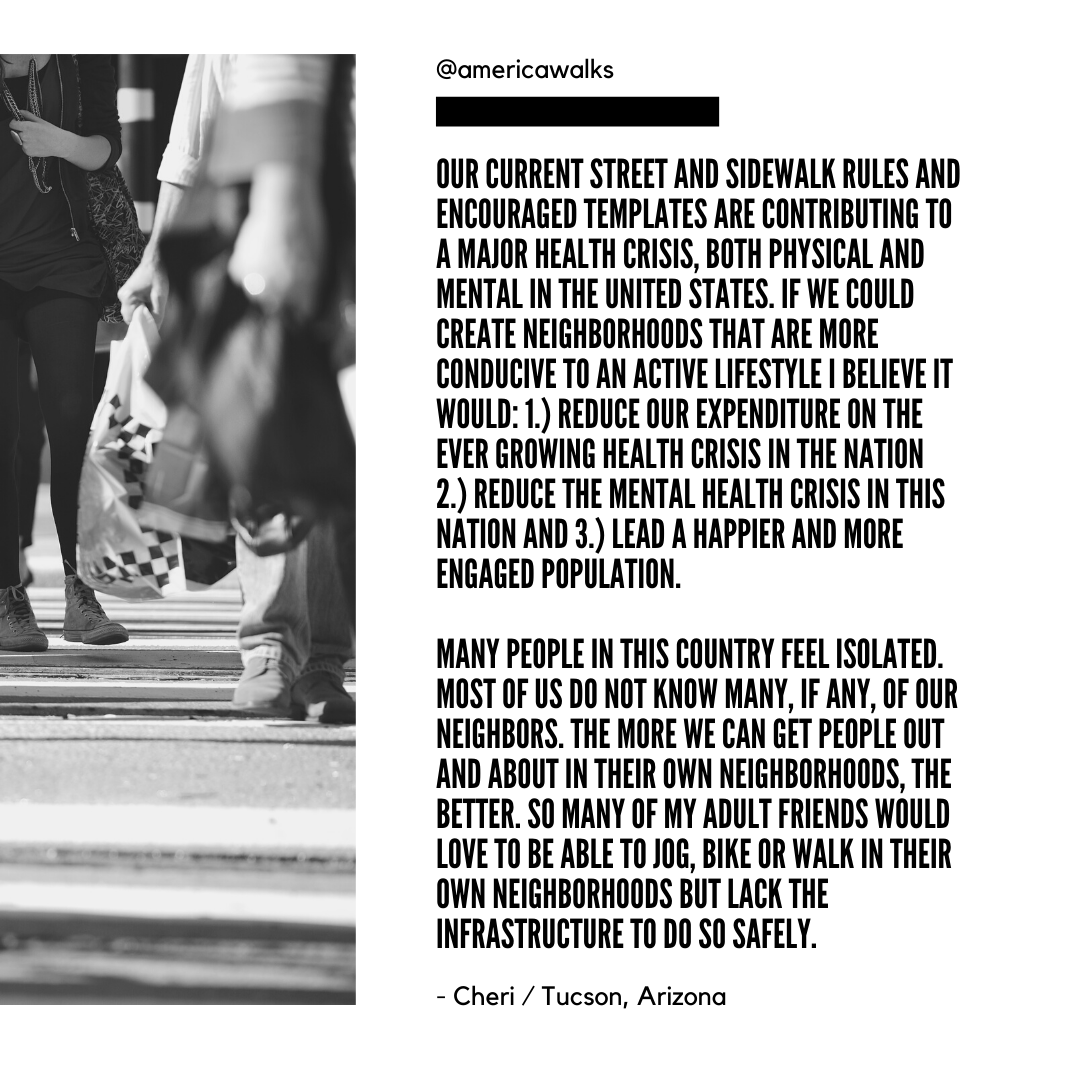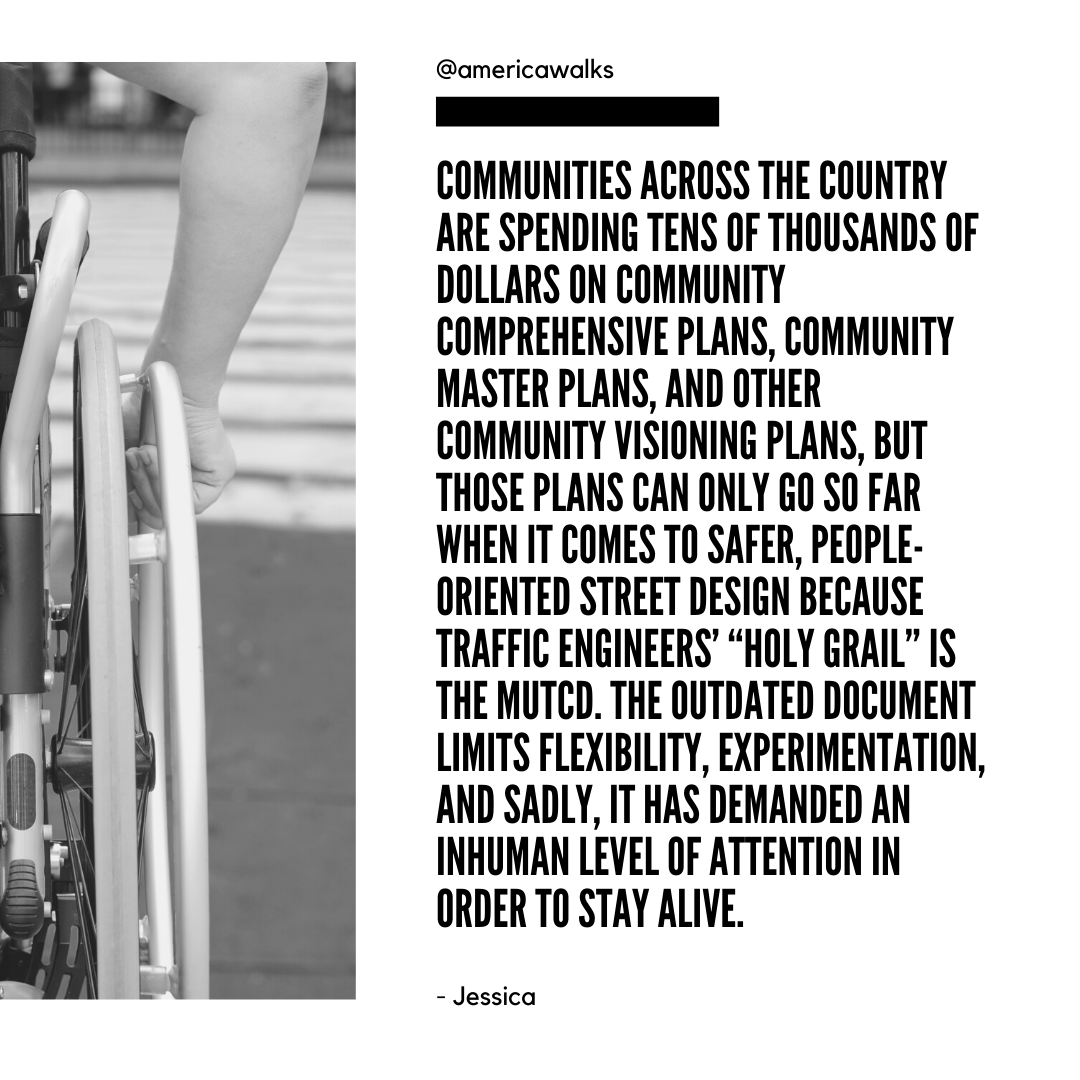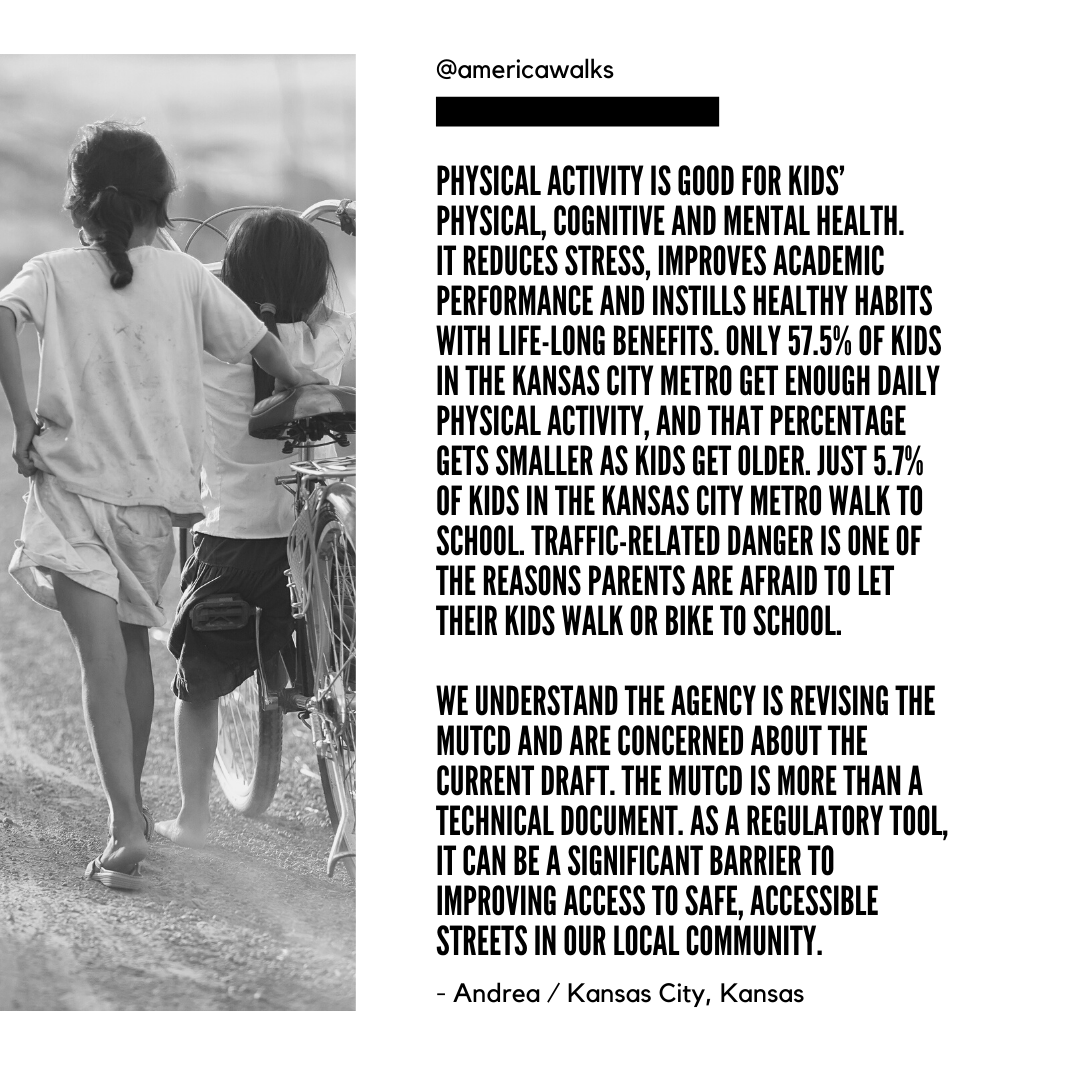The Manual on Uniform Traffic Control devices (MUTCD) is a federal regulation based document that dictates the design of every single street in the U.S. It is deeply, inherently flawed, dated, oddly permissive and ultimately downright dangerous. To put it short – the MUTCD stands in the way of equitable, safe, accessible, sustainable, people-first communities. Click here to watch our in-depth webinar on this topic.
America Walks, along with many other great organizations, has been working feverishly to address this issue amid the Federal Register’s public comment period on the MUTCD. We asked you to get involved – by using our comments/letter template – to tell Transportation Secretary Buttigieg why you think changing the manual is critical.
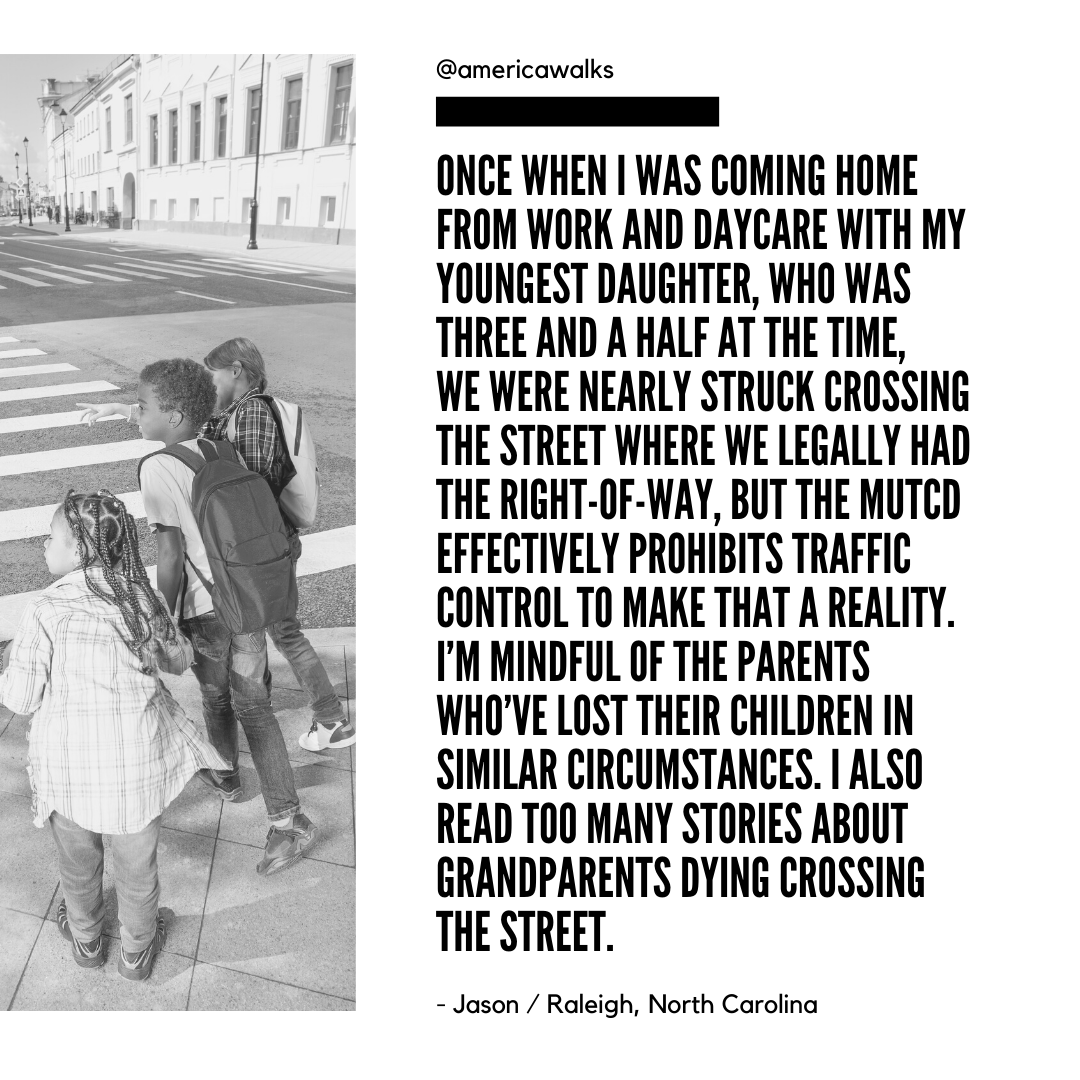
Below is a smattering of some of our favorite and most impassioned, powerful and persuasive submissions from you. We appreciate you sharing them with us. The amount and intensity of personal stories we received and have heard around this issue affirms just how desperately change is needed – yesterday. Please share these graphics and if you haven’t yet, click here to learn more and submit your comments by May 14th.
Read Other Resources / Stories Around Why We Must Fix the MUTCD ASAP:
- The ’Notorious’ MUTCD – Why Fixing a Federal Manual is Critical to Safety, Equity and Climate
- How the MUTCD Creates Unsafe Conditions for People Just Trying to Access Food
- URGENT ACTION ALERT: Demand a better recipe book for safer streets
- The Most Important Pedestrian Safety Document You’ve Never Heard Of
- Modernizing Federal Standards: Making the MUTCD Work for Cities
- Tell Federal Highway Administration (FHWA): Overhaul Transportation Engineering Standards to Integrate Public Health

